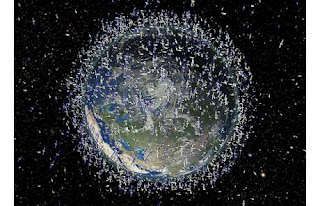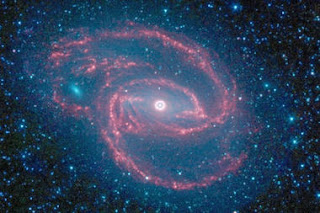
The unidentified object came within 1,100 feet of the space station--closer than any piece of space junk ever, NASA's space operations chief, Bill Gerstenmaier told the Associated Press.
NASA got only 14 hours' notice of the object's approach, not nearly enough time to maneuver the space station out of harm's way, so Mission Control ordered the astronauts into the two Russian Soyuz capsules parked at the station. After about a half an hour, Mission Control gave the all-clear and the two Americans, three Russians and one Japanese floated back and resumed their work.
The event was harrowing because even a small piece of debris can cause big damage, an event that would have forced the astronauts to undock their space capsules and return to Earth.




















